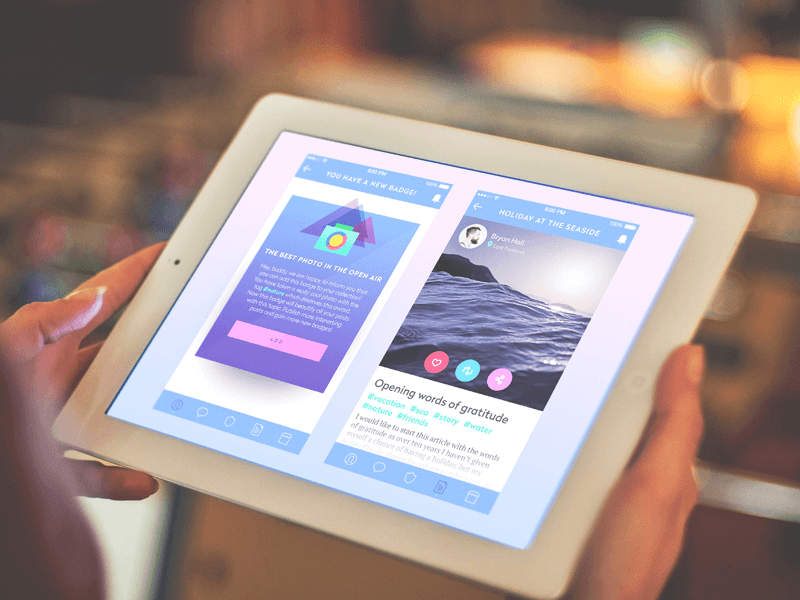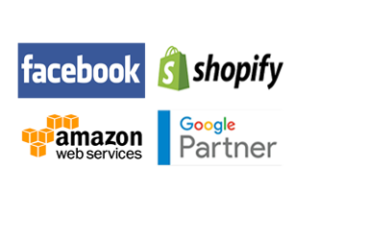

The Science of Copywriting for interfaces
“If you think every pixel, every icon, every typeface matters, then you also need to believe every letter matters.”
Designing has become a paramount aspect for most of the companies now-a-days. Apart from being a presentable form of a subject, it influences the perspective of a person too. Have you ever pondered upon that one special element that makes a design an appealing one? Yes, it is clarity of the message it conveys. There is no purpose of having a good design if the text that it sets is unable to convey the desired message.Therefore, for an interface, words mean and matter the most. When chosen carefully, each and every word is a kind of add on to the user’s experience. It makes them believe that they are going on the right track. It is this mutual relationship between text and visual components that pave the way for an agreeable user interface. That’s where copywriting comes into play.
What is copywriting?
Often called as ‘salesman of print’ Copywriting is the process of writing promotional content for advertising materials. This task is different than writing news and editorials. Copywriting is what prompts a reader to take an action. The action could be of varied types. It could tempt a user to make a purchase, opt into a company or to engage himself with a product, service or company.
A constructive copy content is what actually improvises the engagement of users with the interface along with increasing the usability of app and website of that particular company. It is because of this reason that between two designers the one who has better writing skills is preferred over the other. At times, designers even try to involve with professional writers to make their job more attractive and efficient.
Types of copy
- Information copy
- Headlines :
Headlines are bold phrases that represent the article below. A headline should be instantly appealing to draw a user’s attention. Along with it, it should also be meaningful enough to inculcate in it the theme of the article.
According to Buffer, a famous social media platform, a preferable length of a headline should be 6 words.
- Sub headers :
It is said that only 10% of average readers actually read each and every word written in content. Don’t you think there must be presence of some element that pulls the attention of the reader? That’s where subheadings play an important role. They grab a scanner’s attention by pointing out core points for separate sections of a long text.
In order to make sub headers stand out from the other text, they are generally written in bold and large font size. Also, it is recommended to make font size of sub headers smaller than headings to maintain visual hierarchy.
- Body copy
It is that part of text that provides description to the topic. It is the portion that helps the reader learn about intricacies of the subject.Ususally placed under the subheader, bodycopy majorly influences the opinion of the reader. It’s up to the writer to develop catchy content to sustain the attention of the reader.
There is no pre defined limit to the number of words for a bodycopy.It could be up to the writer. Some prefer writing long to showcase as much knowledge as they can about the subject while others try to keep it short as the most readers find long content quite monotonous to read. It depends mainly on the nature and diversity of target audience.
For mobile apps and most of the landing pages, copywriters prefer keeping the content brief and communicative enough to let the readers know about their product. They prefer using long copy to explain about the services their products provide. A detailed explanation of each service becomes necessary enough for a reader to learn about the perks and incentives their product offers.
- Interaction copy
Captions:
Captions are brief explanations written for leading a picture or a post. Since each picture conveys a different message, each one of them demands a different caption. It depends on the tone of the image and title. An essential prospect for a caption is the subject it is written for.
CTAs:
Call to action is a button used for a quick capture of the attention of the reader and tempting them to take an action. In a literal manner, it is a ‘call’ to take an ‘action’. A CTA microcopy should be written in a presentable way in order to make it stand out from other words in the layout. A high contrast and use of prominent colors are more than enough to make a CTA quite distinguishable.
Notifications:
Notifications are usually brief messages which are used to keep the audience informed with the latest updates. A notification should be short and informative enough so that users remain engaged with the activity and not be perturbed with the same. According to some sources, for a notification to perform well, its length should not be more than 25 characters.
Errors:
Errors are messages displayed at the time of any unexpected happening. They are normally used to provide warnings or at times when user intervention is required. An error message should be written such that the user gets to know about the problem and at the same time could analyze its required solution. Moreover, to increase the efficiency of an error message a designer should think of its placement. Generally it’s appropriate to place the message near the UI element it is related to.
Menu Copy:
The one thing that makes a UI design most alluring and user-friendly is to have an informative navigation menu. The menu kinds can differ according to the interfaces. As explained before, even these require copy. For each kind of menu, we require a single word text.
Tooltip :
Tooltips are texts that provide a hint to the user that the element he is coming across is a part of graphical user interface. When positioned over an UI element the text that appears consists of an overview about that particular function. According to some sources, tooltips work better when the number of characters they incorporate is under 150.
Product generated emails :
Product generated emails are a subset of notifications used for updating the users about the ongoing activities of a particular product. They are of many types: one of them is the category of activation mails. They are sent during sign up for verification. They consist of a link to verify the user’s account or a thank you or welcome note. Most of them also inculcate essential terms and conditions of a product.
Copywriting in user interface has always been about adding feelings to the design and to make them look visually appealing. They maintain consistency between various product elements. Therefore, one should consider spending fairly large amount of time in analyzing the copy and crafting it in a way that supports the UI design format.


